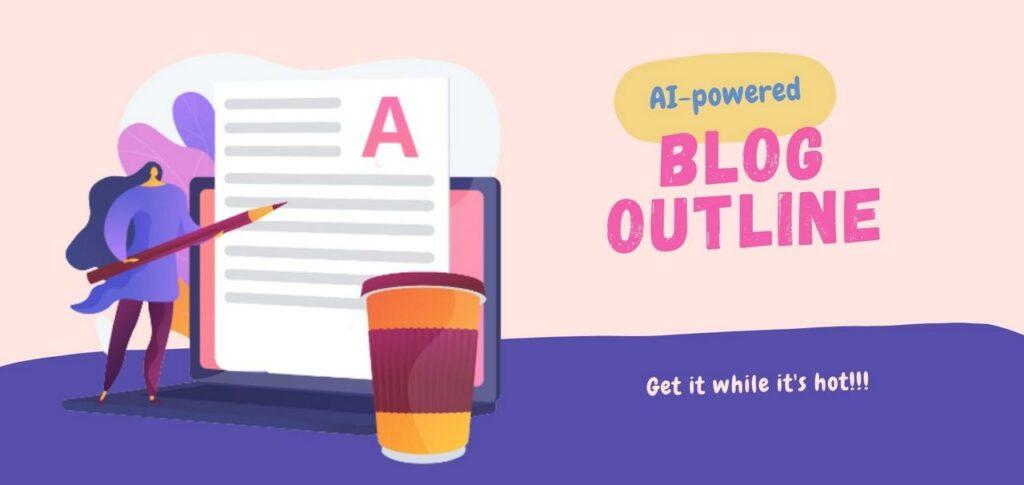When you’re blogging, having a blog outline template for your posts is key. It can help you stay on track while writing, make your posts more cohesive and easier to read, and help ensure that you cover all of the important points that you want to make. In this article, we’ll take a look at why outlining is so important for bloggers – and how you can go about creating blog outline for your own posts.

Introduction to blog outline templates
Blog outline templates are a great way to organize your thoughts and ideas for your blog. They can help you plan out each post and make sure that you cover all of the key points that you want to make. There are a variety of different templates to choose from, so you can find one that fits your style and needs.
When creating a blog article, it’s important to have a clear idea of what you want to say. A well-written outline will help ensure that your post is well-organized and easy to read. It can also be helpful to have an outline when you’re first starting out, so that you have a roadmap for your blog posts.
There are many different ways to create an outline for your blog posts. One popular method is the three-point system, which includes an introduction, body, and conclusion. You can also use headings and subheadings to break down your main points into more manageable chunks.
Whatever method you choose, make sure that the template fits with the tone and style of your blog. And most importantly, be sure to write in your own voice and express yourself authentically!
Benefits of using a blog template
There are many benefits to using a blog outline template. First, it can help you stay organized and on track while writing your blog post. This is especially helpful if you are struggling to come up with ideas for what to write about. A template can provide a framework for your post that will make it easier to get started.
Second, using a template can help improve the quality of your writing. Having a structure to follow will force you to be more concise and focused in your thinking, which will result in better content.
Finally, using a template can also make your blog posts look more professional, which is especially important if you are trying to establish yourself as an expert in your field or attract new readership. A well-organized and well-written blog post will give off the impression that you are serious about blogging and know what you’re talking about.
How can a template help you write better blog content?
There are a lot of different ways to write effective blog content. But one approach that can help you write better blog posts is to use a template.
A template can help you organize your thoughts and ensure that you cover all the key points you want to make in your post. It can also help you stay on track while writing, and make it easier to revise and edit your work later on.
As a content creator, you know that writing great blog content is essential to your success. However, creating engaging and informative posts can be difficult, especially if you’re struggling to come up with ideas. A blog post template can help you write better content by giving you a framework for your posts and providing inspiration for topics to cover.
Blog template layouts
There are a variety of templates available online, or you can create your own based on what works best for you. Some common elements of a blog post template include:
- An introduction
- A body with several sections
- A conclusion
- Links to related articles or resources
If you’re not sure where to start, try using a template as a guide, and then gradually adapt it to fit your own writing style. You may find that using a template helps you write better blog content more quickly and easily.
A good blog post template will include both a structure and a set of guidelines for what to include in your post. It can be helpful to use a template as a starting point, then personalize it to fit your own style. The following are some tips for creating effective blog post templates:
- Start with a catchy headline.
Your headline is the first thing readers will see, so it’s important to make sure it grabs their attention. Try using eye-catching words or phrases that describe the main points of your article.
- Introduce the topic of your article.
In your introduction, explain what the post is about and give readers a preview of what they can expect from reading it. This helps them decide if they want to continue reading or not.
- Outline the main points of your article.
Include brief summaries of each point you plan to make in your post. This will help readers understand the main ideas you’re trying to communicate without having to read the entire article.
- Wrap up your article with a conclusion that reinforces your main points .
Make sure to restate the key takeaways from your post so readers have a clear understanding of what they learned from reading it.
There are a variety of different templates that you can use, but most of them will follow a basic structure. The first section of your post should introduce the topic that you’re discussing, and the second section should provide more details about the topic. The third section should offer insights or opinions about the topic, and the fourth section should provide closing comments. You don’t necessarily need to follow this structure exactly, but it can be helpful as a general guideline.
If you’re looking for ideas for new content, consider using a template to brainstorm some potential topics. Start by thinking about the things that interest you or that you want to learn more about, and then try to find related topics that you could discuss in a blog post. Once you have a few potential topics in mind, start drafting outlines for each one of them using your chosen template. This can help you to get started on your next blog post even if you don’t have any specific ideas yet.
There are many different templates to choose from, and you can even create your own. The key is to find one that works well for you and that you will be able to stick with. Some popular templates include:
- The 5Ws: This template asks you to answer the following questions: Who, What, When, Where, Why. This is a great way to provide basic information about your topic and give readers a summary of what they can expect from your post.
- The 3Cs: This template asks you to focus on the following concepts: Context, Comparison, Critique. This type of post allows you to provide more in-depth analysis of a particular topic.
- The 1T: This template asks you to focus on one main topic or thesis statement. This type of post allows you to provide more detailed information about a single topic.
- The List Post: This type of post consists of a list of items related to a particular topic. List posts are popular because they are easy to read and they often contain useful information. Take this one for example.
- The How-To Post: This type of post provides instructions on how to do something related to your topic area. How-to posts are very popular because they are helpful and informative.
Using AI to create a blog outline
When it comes to creating content for a blog, there are a few different options to choose from. You can create the content yourself, use a template, or use an AI writer. Each of these options has its own benefits and drawbacks.
Artificial intelligence has the ability to create blog outlines for any given topic. It can analyze a large number of sources on the web and identify the most important points, organizing them into a cohesive structure that is easy to follow. This would be a valuable tool for bloggers who want to ensure their content is well-informed and properly organized.
Creating the content yourself is the most time-consuming option, but it also gives you the most control over the final product. If you want to ensure that your content is high quality and original, then creating it yourself is the best option. However, this option can also be expensive if you need to hire a professional writer to help you create your content.
Using a template is the quickest and easiest way to get your blog up and running, but it can also limit your creativity and flexibility. Templates are great for basic blogs with minimal content, but they can’t be used for more complex websites.
There are pros and cons to using templates when creating blog posts. On the one hand, templates can help you stay organized and ensure that all of your posts have a similar format. This can make your blog look more professional and cohesive. Templates can also help you come up with ideas for posts, since they provide a framework to work within.
On the other hand, templates can be restrictive and prevent you from being creative. If you don’t like the template you’re using, it can be difficult to change it without messing up the whole post. Also, if you use a pre-made template too often, your readers may start to feel bored with your content.
AI writers are becoming increasingly popular due to their ability to create high quality content quickly and efficiently. They can write in multiple genres, making them versatile enough for any type of website. Additionally, AI writers are often cheaper than hiring a professional writer, making them an affordable option for small businesses or bloggers on a budget.
There is no doubt that AI has the potential to revolutionize the way we live and work. With its ability to analyze data and make predictions, AI can help us optimize our lives in ways we never thought possible. In the context of blogging, AI can be used to create templates for blog posts that are customized to your specific needs and preferences.
Traditional blog outlines rely on a human’s intuition and experience when it comes to what makes a good post. However, AI can take all of that into account and create an outline for you that is tailored specifically to your audience and topic. Not only does this save you time and energy, but it also ensures that your posts are well-crafted and engaging.
In addition, AI can also help you come up with new ideas for posts by analyzing similar content and identifying trends or patterns. This means that you will always have fresh content ideas without having to do any extra work!
Conclusion
Using a blog outline template can be an extremely helpful way to organize your thoughts and create a well-constructed blog post. By taking the time to plan out your post in advance, you can ensure that your ideas are clear and easy to follow, and that your readers will have a good overall experience.
There is no clear answer as to whether blog outline templates or AI-created outlines are better. On the one hand, templates can help you get started quickly and easily, while AI-created outlines can be more tailored to your specific needs. However, on the other hand, it can be difficult to find a good template that fits your blog’s topic and style, while an AI-created outline will be specifically designed for your blog. Ultimately, it comes down to personal preference – try out both options and see which one works better for you.



